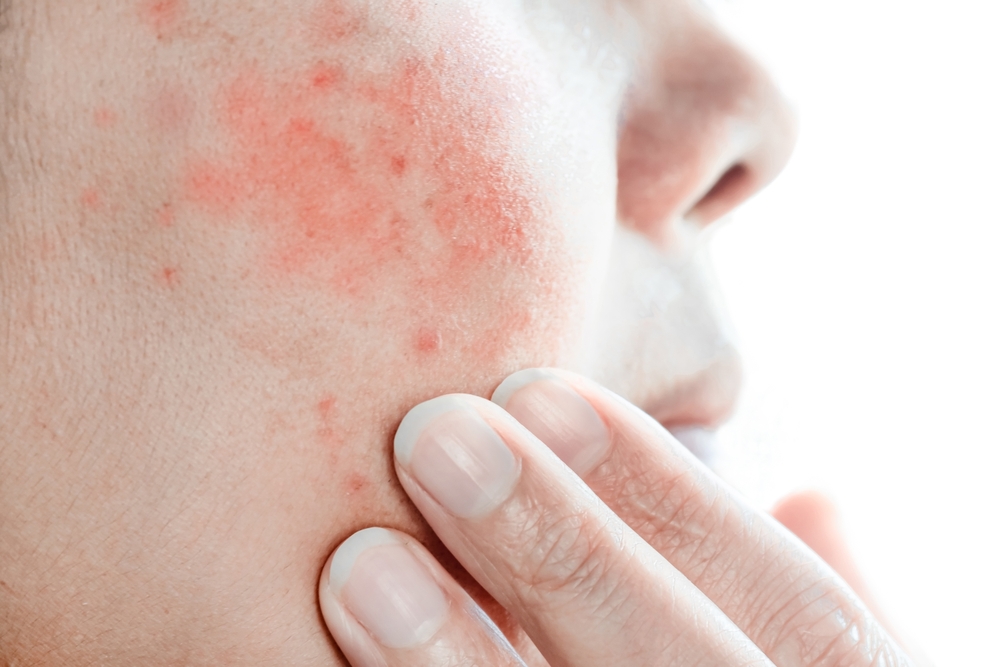Laser technology has transformed numerous fields, from cosmetic dermatology to vision correction and tattoo removal. But when misused, these devices can cause serious injuries. One common and potentially devastating injury is a laser burn. Whether the result of negligence, defective equipment, or unlicensed operation, laser burns can lead to permanent scarring, disfigurement, and significant emotional trauma.
Victims of such injuries may wonder: Can I sue for laser treatment burns? The short answer is yes, under specific laws. If you or someone you love has suffered laser burns due to a negligent cosmetic procedure, you should contact Brown & Gessell for a consultation to pursue legal action for cosmetic procedure burns.
What are Laser Burns?
Laser burns occur when concentrated beams of high-energy light, commonly used in medical or cosmetic procedures, penetrate the skin with too much intensity, heat, or exposure time. These burns can vary in severity, ranging from superficial first-degree burns to more serious second— and third-degree burns that may result in blistering, deep tissue, damage, scarring, or permanent disfigurement.
These injuries are most commonly associated with cosmetic laser hair removal procedures. In severe cases, laser hair removal burns can lead to nerve damage or even infection if not properly treated. Common treatments that carry the risk of laser burns include:
- Cosmetic laser hair removal treatment
- Cosmetic laser skin resurfacing
- Tattoo removal
- Laser eye surgery (e.g., LASIK or PRK)
- Laser therapy for acne, hyperpigmentation, or vascular lesions
Proper training, safety protocols, and accurate skin assessments are critical to preventing laser hair removal injuries.
Common Causes of Laser Burn Injuries
Improper Training or Unlicensed Operation
In California, laser-based cosmetic and medical treatments fall under the regulation of the Medical Board of California. A procedure such as laser hair removal involves advanced techniques to remove unwanted hair. These are classified as medical treatments and must be performed by, or under the direct supervision of, a licensed physician.
Unfortunately, some facilities allow unlicensed or poorly trained technicians to operate powerful Class III and Class IV laser devices, significantly increasing the risk of patient injury. Improper use of lasers can result in burns, scarring, pigment changes, or even eye damage. Victims injured by unauthorized practitioners may have strong grounds for laser hair removal lawsuits against both the individual and the facility.
Inadequate Safety Measures
Neglecting basic safety procedures is a major contributor to laser burn injuries. Failing to provide protective eyewear, not testing a patient’s skin for sensitivity, incorrect machine calibration, or skipping pre-treatment consultations for hair follicle removal can all lead to avoidable harm.
California law places a duty of care on professionals to uphold safety standards. A breach of this duty may constitute medical negligence. Even something as simple as using the wrong wavelength or applying the laser to inappropriate skin types can cause serious thermal injuries.
Malfunctioning or Defective Equipment
Laser equipment must function within precise energy parameters. When a device is defective, poorly calibrated, or not routinely maintained, it can misfire or emit dangerous levels of heat. This can cause unexpected burns or tissue damage.
In such cases, the manufacturer, distributor, or maintenance provider may be liable under California’s product liability laws. Claims may be based on design defects, manufacturing flaws, or a failure to warn about known hazards.
Informed Consent Violations
Patients have a legal right to be informed about the potential risks, complications, and outcomes of a procedure. If a provider fails to disclose these risks or pressures a patient into treatment without proper explanation, this may form the basis of an informed consent violation. Such violations can result in liability even if the procedure itself was technically performed correctly.
Legal Grounds for Suing for Laser Burns in California
Medical Malpractice
If the laser procedure was performed by or under the supervision of a medical professional, your case might fall under California medical malpractice law. To prove malpractice, you must show:
- A provider-patient relationship existed.
- The provider owed a duty of care.
- The duty of care was breached.
- The breach caused the laser burn injury.
Under California Code of Civil Procedure §400-425.15, there are specific requirements for medical malpractice cases, including a pre-litigation notice and an expert witness declaration.
Negligence
In cases where the procedure was performed by a technician or aesthetician not governed by medical malpractice laws, you may sue under a general negligence theory. The elements of negligence in California are:
- Duty of care
- Breach of that duty
- Causation
- Damages
Understanding personal injury cases related to laser burns requires extensive legal experience. Make sure you get legal representation from a top-rated personal injury attorney with a proven track record in various types of injury claims.
Product Liability
If the laser device itself was defective due to poor design, manufacturing flaws, or inadequate warnings, a product liability lawsuit may be appropriate. California follows “strict liability” for defective products, which means you may not need to prove negligence to recover damages.
Premises Liability
If the laser treatment was provided at a spa or clinic with unsafe conditions (e.g., poorly maintained equipment or unqualified staff), the facility itself may be held liable under premises liability law. Choose Brown & Gessell’s legal services to pursue maximum compensation for laser injuries under specific California laws.
Statute of Limitations for Laser Burn Lawsuits in California
California law imposes deadlines on when you can file a lawsuit:
- Medical malpractice cases: 1 year from the date you discovered the injury, or 3 years from the date of injury (whichever comes first), under California Code of Civil Procedure §350.5.
- General personal injury claims (negligence): 2 years from the date of injury.
- Product liability cases: 2 years from the date of injury.
Missing the applicable deadline can result in your case being permanently barred.
Evidence Needed to Prove Your Case
To successfully sue for laser burns, plaintiffs typically need to gather and present the following evidence:
- Photographs of the injury, both immediately after the incident and throughout the healing process
- Medical records showing diagnosis, treatment, and prognosis
- Expert testimony to explain how the injury occurred and what standard of care was violated
- Maintenance logs or service records of the laser device
- Licensing records of the person or facility that performed the procedure
- Eyewitness accounts or affidavits from clinic staff or others who witnessed the procedure
- Documentation of economic losses, such as pay stubs or tax returns for lost wages
Challenges in Suing for Laser Burn Injuries
Determining Liability
One of the most complex aspects of a laser burn case is identifying the liable party. Was the technician improperly trained? Was the equipment defective? Was the supervising physician negligent in oversight? Proper investigation is key to determining who is legally responsible.
Proving Causation
It must be clearly established that the laser treatment caused the injury—not a pre-existing condition, a subsequent infection, or a failure to follow post-procedure instructions.
Insurance and Waivers
Many cosmetic treatment centers require clients to sign liability waivers. However, these waivers may not be enforceable in cases involving gross negligence or statutory violations.
Expert Testimony
Expert witnesses such as dermatologists or laser safety professionals are usually necessary to explain why the procedure fell below the standard of care and how the burn could have been prevented.
Special Considerations in Cosmetic Procedures
California law distinguishes between medical and cosmetic procedures. While both can be grounds for liability, medical procedures often fall under stricter rules. However, cosmetic laser treatments performed without a medical license may open up additional claims, including unlicensed medical practice under the California Business and Professions Code.
Moreover, facilities advertising cosmetic laser treatments without clearly identifying licensed medical oversight may face regulatory consequences and increased legal exposure.
Steps to Take If You Suffer a Laser Burn
- Seek Immediate Medical Attention: Prompt treatment not only helps with recovery, but also creates medical documentation crucial to your case.
- Document Everything: Take photographs of your injury, save receipts, and keep records of appointments and expenses.
- Request Records: Obtain records of your consent forms, treatment notes, and any equipment-related documentation.
- Avoid Speaking with the Facility’s Insurance Company: Do not agree to a settlement or provide a statement without legal counsel.
- Consult a Personal Injury Attorney: A skilled attorney can evaluate your case, preserve evidence, and pursue fair compensation for your injuries and losses.
Get Strong Legal Representation from Our California Personal Injury Lawyers
If you have suffered laser burns due to negligence, defective equipment, or unqualified practitioners, you don’t have to face the consequences alone. At the Law Offices of Brown & Gessell, we bring decades of combined experience to every personal injury and medical malpractice case.
Our attorneys Steven L. Brown and Douglas A. Gessell began their careers at insurance defense firms. This gives them a unique advantage in anticipating and countering the strategies used by insurers to minimize payouts.
Whether you have been injured at a medical spa, cosmetic clinic, or healthcare facility, we will fight aggressively to hold all responsible parties accountable. We understand the medical and legal nuances of laser burn claims and will seek the maximum compensation you need. To schedule your free consultation, call us at (209) 583-3938 or contact us online.


